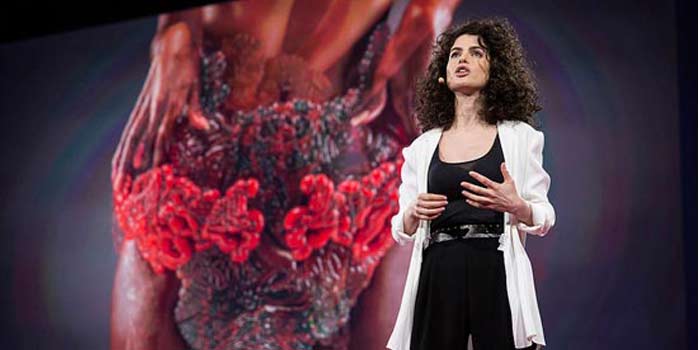Well known Israeli designer and architect, Neri Oxman and Stratasys have just gone on to unveil the world’s first 3D printed photosynthetic wearable, embedded with living matter. Both the parties chose the TED 2015 conference to be the stage on which the new project was showcased to the world. A video of it is yet to go online though.
Mushtari, an artwork 3D printed by Stratasys combines multi-material additive manufacturing and synthetic biology. Oxman stressed on the fact that this is the first time that 3D printing technology has been utilized to produce a photosynthetic wearable piece using hollow internal channels designed to house microorganisms.

The 3D printed Mushtari has been inspired by the human gastrointestinal tract, according to Neri Oxman. It supposedly hosts synthetic microorganisms, a co-culture of photosynthetic cyanobacteria and E. coli bacteria. These can fluoresce bright colors in darkness and produce sugar or biofuels when exposed to the sun.
Thanks to these abilities, humans from the near future may be able to scan their skins, repair damaged tissues and sustain their bodies. Mushtari has been built using the unique triple-jetting 3D printing technology owned by Stratasys. With its use, Oxman’s team was able to create a large fluid network within Mushtari that varied in transparency from opaque to clear.
Also Read: Copper combustion chamber liner is NASA’s first 3D printed rocket part
The tailormade technology from Stratasys helped in various levels of transparency and translucency to be created into the surface areas where photosynthesis was desired. Following this, channels and pockets were implemented with an aim of enhancing the flow and functionality of the cells.
Stratasys and Neri Oxman’s 3D printed creation saw the Mushtari for the first time work as an artificial vessel to support, control and manipulate living organisms inside. That is quite an achievement for science itself.
